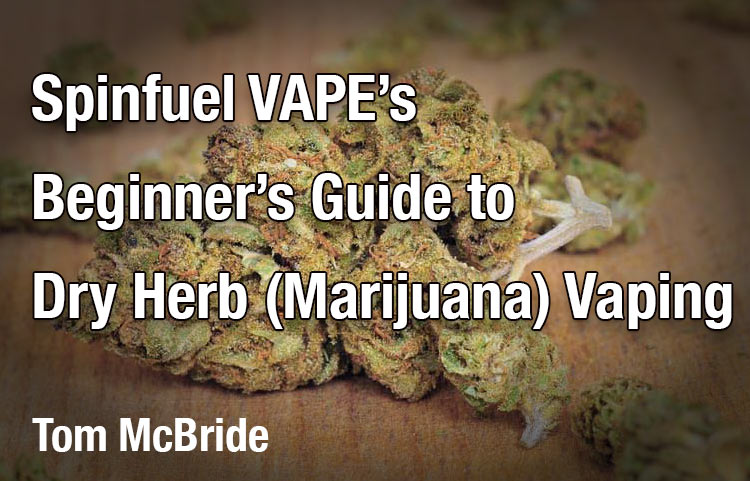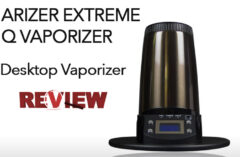Table of Contents
Dry herb consumption is hardly a unique concept. For centuries, botanical enthusiasts have enjoyed the rich nuances and experiences native to cannabis and cannabis-extracts. Whether as an alternative, therapeutic platform, or simply as a means to unwind, dry herb hits have been a staple of nearly every culture, with varying degrees of acceptability.
It’s fair to say that the broader scope of cannabis consumption hasn’t changed. What has changed, however, is the mechanism. Over the past few decades, dry herb enthusiasts were limited to traditional, analog platforms. Today, thanks to the advent of the vaporizer and its associated technologies, “botanists” are blessed with an abundance of choices.
Having options is never bad – as a vape or herbal connoisseur, you want to have the ability to modulate your platform to deliver specific flavor profiles. At the same time, vaping newcomers can find the product portfolio a tad bit overwhelming, especially if they’re traditionalists transitioning to the digital realm.
Whatever your skill level, or lack thereof, dry herb vaping is a wonderful tool to add to your repertoire. Indeed, most people who make the switch to dry herb, cannabis vaporizers rarely go back to the analog platform, if at all.
This guide is primarily written for the cannabis-vaping rookie; however, we’ve included several informative data points that vaping veterans could use as a reference.
So, without further ado, here’s our Beginner’s Guide to Dry Herb Vaping!

Why Dry Herb Vape?
Cannabis enjoyment isn’t exclusive to any one methodology. Some folks prefer the old-school style of rolling their botanicals; some eschew the rather simplistic and direct technique for the more elaborate water-filtration process. Each has their vocal fanbase and their unique sets of pros and cons. So what makes dry herb vaping so special?
The answer boils down to the purity of the “end product.” While the traditional art of cannabis consumption has been perfected over hundreds, even thousands, of years, an analog enthusiast cannot avoid the consequences of combustion.
The combustion concept isn’t an exclusive avenue of cannabis or other “mature” sectors. Anytime you burn material, or more specifically, any time you ignite a material by placing it in direct contact with a heating source, you automatically catalyze a chemical reaction. Furthermore, that reaction leads to undesirable emissions, particularly carbon monoxide (CO) and other harmful residues.
Unfortunately, CO exposure is no joke. According to the National Institute for Occupational Safety and Health, CO is a colorless, odorless gas that can create all manners of acute health problems, including death in the most severe cases.
CO exposure is extremely dangerous not only because it’s natively impossible to detect, the toxic gas directly and negatively impacts the blood’s capacity to deliver oxygen to vital organs. Of course, most traditionalists don’t inhale nearly as much CO as to induce acute symptoms; however, medical studies indicate that frequent, long-term exposure can cause issues to aggregate.
By the very nature of the vaporizer design, the platform catalyzes vaporization, not combustion. Though the broader answer seems obvious, the technical distinction is critical.
Vaporization versus Combustion
In the highly contentious and unprecedented 2016 election, cannabis advocates won a major victory, with a record number of states voting for marijuana legalization. The decisions at the ballot were particularly meaningful for the aromatherapy community, which politically gave them credibility for their personal choices.
However, the inescapable irony of “herbal solutions” is that for several decades, patients who used medicinal marijuana were poisoning themselves with the aftereffects of combustion. Much of these unwanted chemicals are grouped under a category called polycyclic aromatic hydrocarbons, or PAH for short.
There’s some debate among researchers over whether or not traditional cannabis platforms emit more or fewer PAH substances — which are inherently carcinogenic – than analog cigarettes. But what is not challenged is the vaporizer platform’s advantage: very little, if any PAH emissions, and a significantly purer experience.
Modern dry herb vape devices achieve this extraordinary reduction in harsh and toxic chemicals by deploying a stream of heated air to vaporize the core ingredients; however, the key difference is that the vaporization process (assuming a properly working device) heats materials up to the combustion point, not beyond it.
The end result is that the dry herb vaporizer releases more of the nuances and subtle flavor profiles than the traditional platform, which simply burns through the material. The analog method’s “brute-force attack” is hardly precise – whatever tones are released are released. Therefore, the overall session enjoyment suffers.
More importantly for the budget-minded vaper, vaporization uses less of your choice materials. Under the traditional method, cannabinoids are directly burned, impacting their chemical composition. This process is problematic as the cannabinoid molecules break down into free radicals.
Vaporization, on the other hand, doesn’t break down cannabinoids. Essentially, a vaper is able to extract and enjoy more cannabis flavors than would be possible when inhaling the same amount of materials using an analog platform.
Conduction versus Convection
The emphasis on avoiding combustion is a natural segue into the “conduction versus convection” debate. As it stands, most traditional portable platforms operate using conduction; that is, the materials are heated by putting them into direct contact with a heating source. On the other side of the coin, modern digital vaporizers offer the choice between conduction and convection.
Before we dive in, let’s define the terminologies. Conduction transfers heat via a physical substance or solid material. A good illustration is cooking a steak with a frying pan – a hot stove transfers heat through a physical solid (the pan), which then transfers thermal energy to the steak.
Convection transfers heat through a liquid or gas. An equivalent illustration is cooking food in boiling water or steam cooking your vegetables. Convection essentially is an indirect form of heating since the target material doesn’t contact the heating source. In the case of vaping, the convection process is generally more desired because your dry herbs are evenly heated, as opposed to conduction vaporizers, which require stirring to prevent some parts of the material from overheating.
However, vapers should know that there are no hard and fast rules about conduction versus convection. Primarily, no matter how they are advertised, all portable vape devices utilize some mix between conduction and convection. Second, each method has their own set of pros and cons, and different attributes may be more important to specific enthusiasts.
For instance, while conduction vaporizers are known to excessively burn dry herbs if not stirred adequately, they heat up incredibly quickly – typically in five seconds for most devices. Moreover, conduction vaporizers usually feature less complicated mechanisms, and thus are more appropriate for novices. In addition, fewer complicated parts means decreased chances of something going wrong.
On the other hand, convection dry herb vaporizers take more time to heat up. They’re also more complex devices, and because of that, are usually more expensive. However, for the true aficionado, nothing matches the precise temperature control and pure flavor emitted from convection. Of course, there’s the reduced risk of combustion to factor in.
But overall, the conduction versus convection debate settles with the end-user. Whatever you prefer is ultimately the right choice for you.
Dry Herb Vaporizer Categories
Prior to the mass explosion in popularity of the vaporizer format, it was fairly easy to make your dry herb vape choice. Frankly, there wasn’t much of a choice. To paraphrase the iconic Henry Ford, you can have any color as long as it’s black.
Today, the situation represents a massive paradigm shift from the inception phase. With an ever-increasing number of competitors and multiple innovations being forwarded on a constant basis, it can be very difficult for industry professionals to keep up. For novices, the plethora of options can be daunting.
We’ll cut to the chase and make things as simple as possible. Generally speaking, we have three types of dry herb vaporizers: pen-style, handhelds, and desktops. Each has their own set of positive attributes, as well as nuances that don’t make them ideal for every circumstance. We break down the details below:
- Pen-style dry herb vaporizer – Pen-style vapes such as the Atmos Jump or the Cloud Pen are probably the most common vaporizer format you’ll see on a day-to-day basis. The reason is two-fold: they’re incredibly small and can fit virtually anywhere, and they’re exceptionally discreet, often resembling the object of its namesake.
As you might assume, pen-style dry herb vaporizers are perfect for portable use, as well as “quick fire” situations which require immediate sessions and absolute discretion. As a result, many dry herb pens are conduction platforms due to their rapid heat-up time.
Pen-styles are usually not appropriate for truly robust sessions, unless you buy premium-level pens. Even then, the format’s small dimensions puts them at a significant disadvantage when it comes to flavor and performance.
- Handheld dry herb vaporizer – Handheld vaporizers such as the Boundless CFX are considerably more thicker than pen-style vaporizers, allowing engineers to integrate more machinery into the platform. As a result, they’re usually more expensive than their pen-style counterpart. At the same time, most handhelds feature classy designs, making them discrete as well.
Handheld vapes are favored by the same people that use pen-style dry herbs. The difference typically is that handheld vapers want more robust, flavorful sessions. Thus, they’re willing to sacrifice some portability in favor of a better vaping experience. Also, handhelds, due to their greater size, are able to better actualize advances in vaping technologies.
Although handhelds are wonderful for connoisseurs that find themselves constantly on the go, many of them lack the true portability and discretion of the pen-style vaporizer. Therefore, you should clearly understand your situation first before raking over the dough for a premium handheld.
- Desktop dry herb and Cannabis Vaporizer – The desktop is the grand-daddy of all the dry-herb vaporizers. If you want an uncompromising, reliable platform, the desktop has no equal. To truly enjoy the benefits of cannabis leaves without any hint of combustion or undesirable residuals, the desktop provides the only channel for the discerning enthusiast. The Volcano Digital Vaporizer by Storz & Bickel is probably one of the most popular desktop vaporizers of all time.
Desktops feature two main types of delivery methods: whip-style and balloon bag. With whip-style, the enthusiast draws in vapor through a tube, usually manufactured out of medical-grade materials. In balloon bag, the vapor is first delivered into a balloon, from which the vaper will later inhale. This produces a level of purity that is uncommon in other dry herb vaporizers.
At the same time, the desktop isn’t without its drawbacks. Primarily, the problem is that it’s incredibly bulky, and would not be in any way considered discreet. Secondarily, desktops are expensive. If they’re not expensive, they should be. Cheap desktops produce cheap vapors, making it better off purchasing a premium compact, or even a decent pen-style vape.
Conclusion
Dry herb vaping is an incredibly rewarding experience. Without the nasty side-effects of combustion, the vaporizer platform delivers cannabis the way that it was meant to be consumed. Furthermore, the dry-herb vapes make subtle nuances and flavor profiles possible, while the traditional method literally burns them out.
Part of the complexity, but also part of the profound joy of the dry herb vaporizer format is its incredible diversity. Whether you’re a flavor-lover or a busy mover-and-shaker, there’s a vape product just for you! You can find a wide selection of dry herb vaporizers at our go-to herbal vape site NugRepublic.com
Nug Republic has been essential to me in my discovery, and journey, into the dry herb segment of the vape industry. Giving me complete access to information, opinions, interviews, and the testing of as many vaporizers and accessories as I needed, these guys are solid as they come. They sell only genuine products, offer great customer support, and the prices are very competitive. Check them out for your next dry herb vaporizer.
Tom McBride





